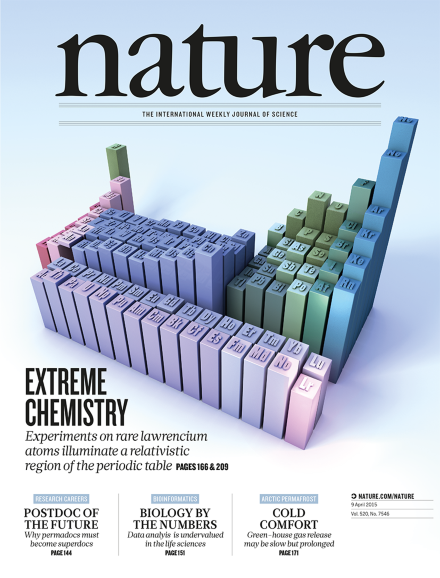Volume 520 Issue 7546, 9 April 2015
Editorial
World View
Research Highlights
Social Selection
Seven Days
News
News Feature
Comment
Books & Arts
Correspondence
Obituary
News & Views
-
Prebiotic chemistry on the rocks
Collection:

